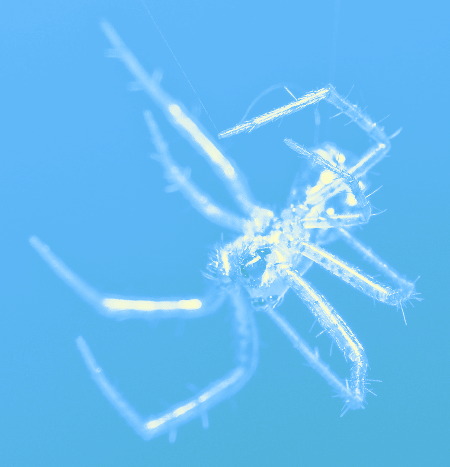Spiders could sail on natural spark
 Scientists say electricity could help spiders take flight.
Scientists say electricity could help spiders take flight.
Spiders are regularly seen travelling hundreds of kilometres through the air by releasing silk and floating away.
Researchers had thought that ballooning behaviour required drag forces from wind or thermals, but new studies show that electric fields at strengths found in nature not only trigger ballooning, but also provide lift, even in the absence of any air movement.
The notion that atmospheric electric fields might play a role had first been floated in the early 1800s, but it had been long ago dismissed despite never being tested.
The atmospheric potential gradient (APG) - an electric circuit between the Earth and the ionosphere that is maintained by thunderstorms - is ever present around the world.
But the strength of the APG varies; on a calm day with clear skies, the APG may reach 100 V/m. On a stormy day or in the presence of charged clouds, the APG can soar to 10 kV/m.
Researchers from the University of Bristol have taken empirical measurements to see whether spiders actually respond to electric fields and to variation in those fields.
The team conducted experiments with Linyphiid spiders in a laboratory environment that allowed them to remove other stimuli, such as air movement, and provide a uniform electric field for the spiders.
Their experiments showed a significant increase in ballooning when electric fields were switched on.
That change in the spiders' behaviour confirmed that spiders can indeed detect APG-like electric fields and that they respond to those electric fields by ballooning.
Once the spiders were airborne, switching the electric field on and off led them to move upward or downward, respectively.
“We don't yet know whether electric fields are required to allow spider ballooning,” says Erica Morley from the University of Bristol.
“We do, however, know that they are sufficient.”







 Print
Print